A Beginner's Practice
A simple yoga sequence to follow from the comfort of your own home. By Eva Kristlova
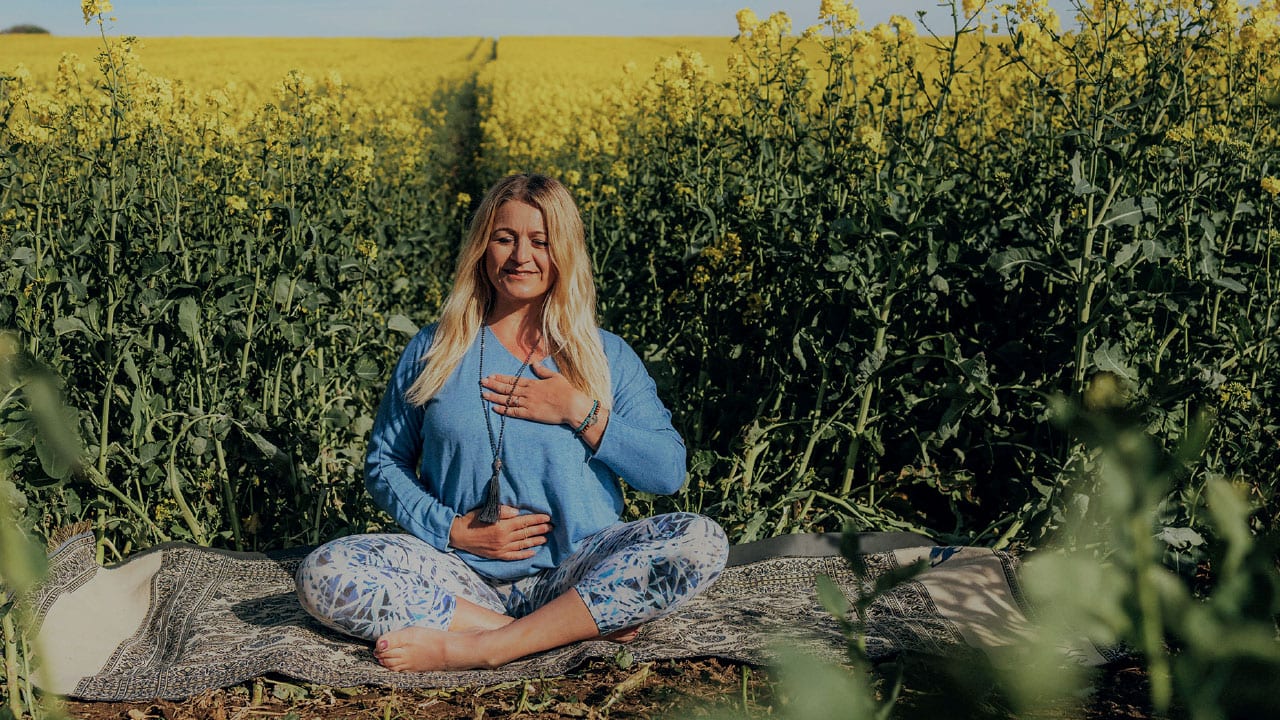
1. Breath Awareness
Start your practice in a comfortable seated position. If comfortable, cross your legs and close your eyes. You can use a block to sit on and elevate your hips. Make sure your spine is long and straight and you are not rounding your back. You can rest your hands on your knees, in your lap or place one hand on your chest and one hand on your belly. Chose what feels best for you. Start to focus on your breathing and allow your body to relax a little bit more with each passing exhale. Let go of your daily worries and try to stay in this moment in time. You will notice your mind tries to take you away from here, to the past and to the future. Keep coming back to now.
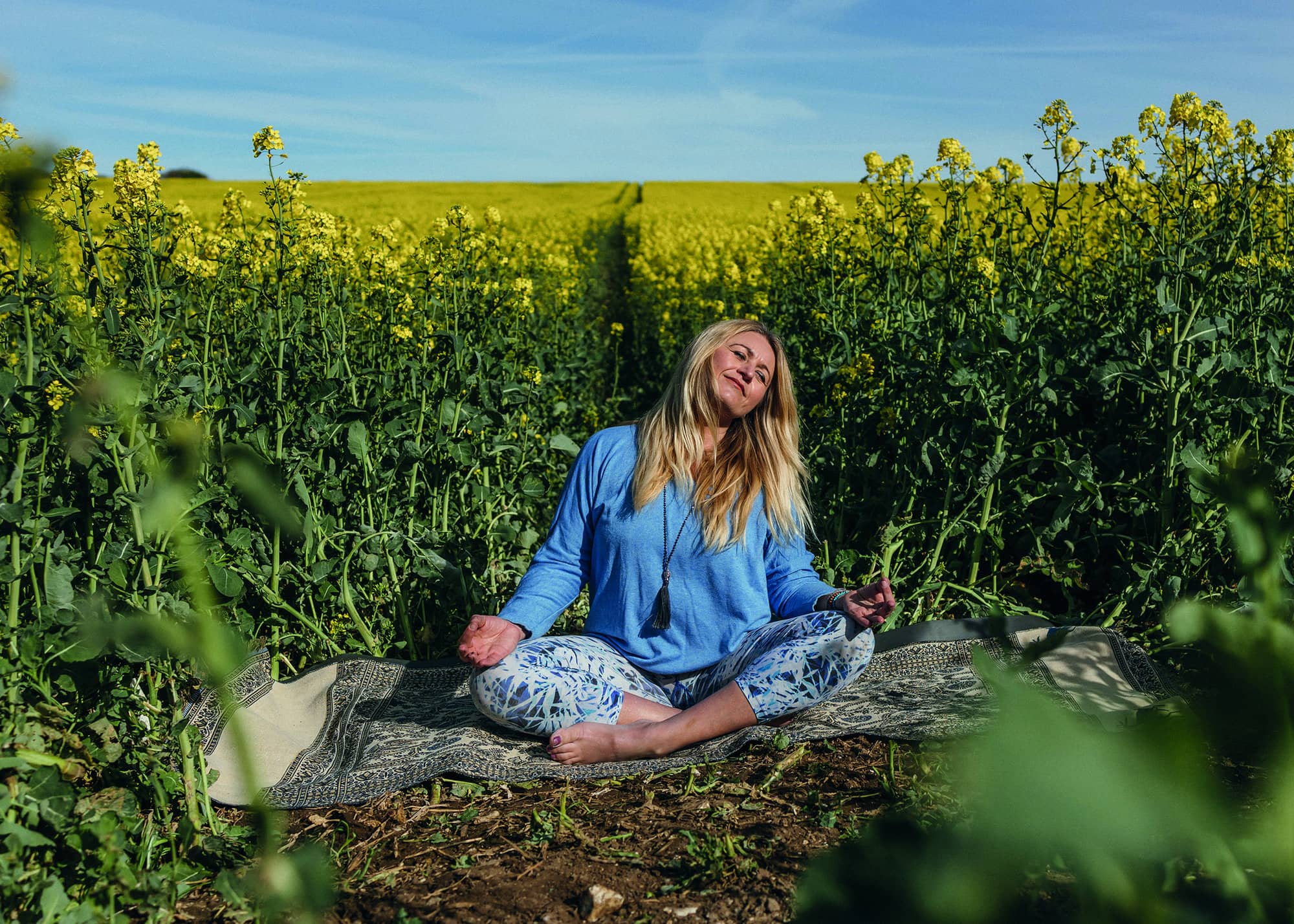
2. Easy Pose (Sukhasana) With Head Rolls
Sit cross-legged if your body lets you, use a block or folded blanket/cushion for support. Your spine needs to be straight and posture comfortable; if you find this challenging you can stretch your legs or sit on a chair. Bring your chin towards your chest and slowly start to roll your head towards your right shoulder and then very slowly and gently to the left shoulder. Repeat several times, be mindful of any stiffness and sensitivity in the neck area. When you feel ready bring your chin back towards your chest and gently start to lift your head up.
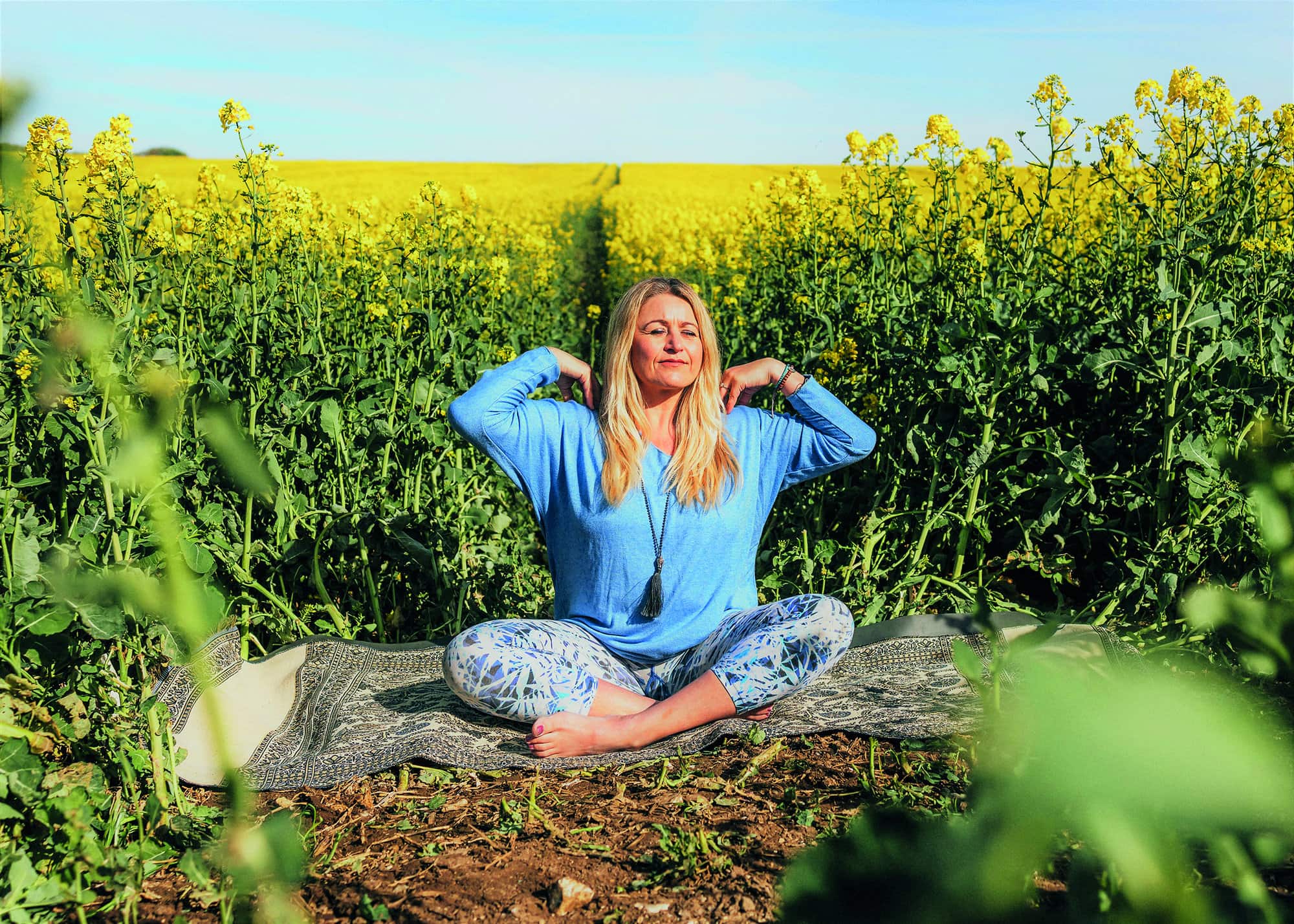
3. Shoulder Rotations (Skandha Chakra)
Still seated, bring your fingertips to your shoulders and slowly start to roll your shoulders forward and up, then back and down. Try to connect this shoulder movement with your breath, inhale as you take your shoulders forward and up, exhale as you take them back and down. Don’t forget to change direction too.
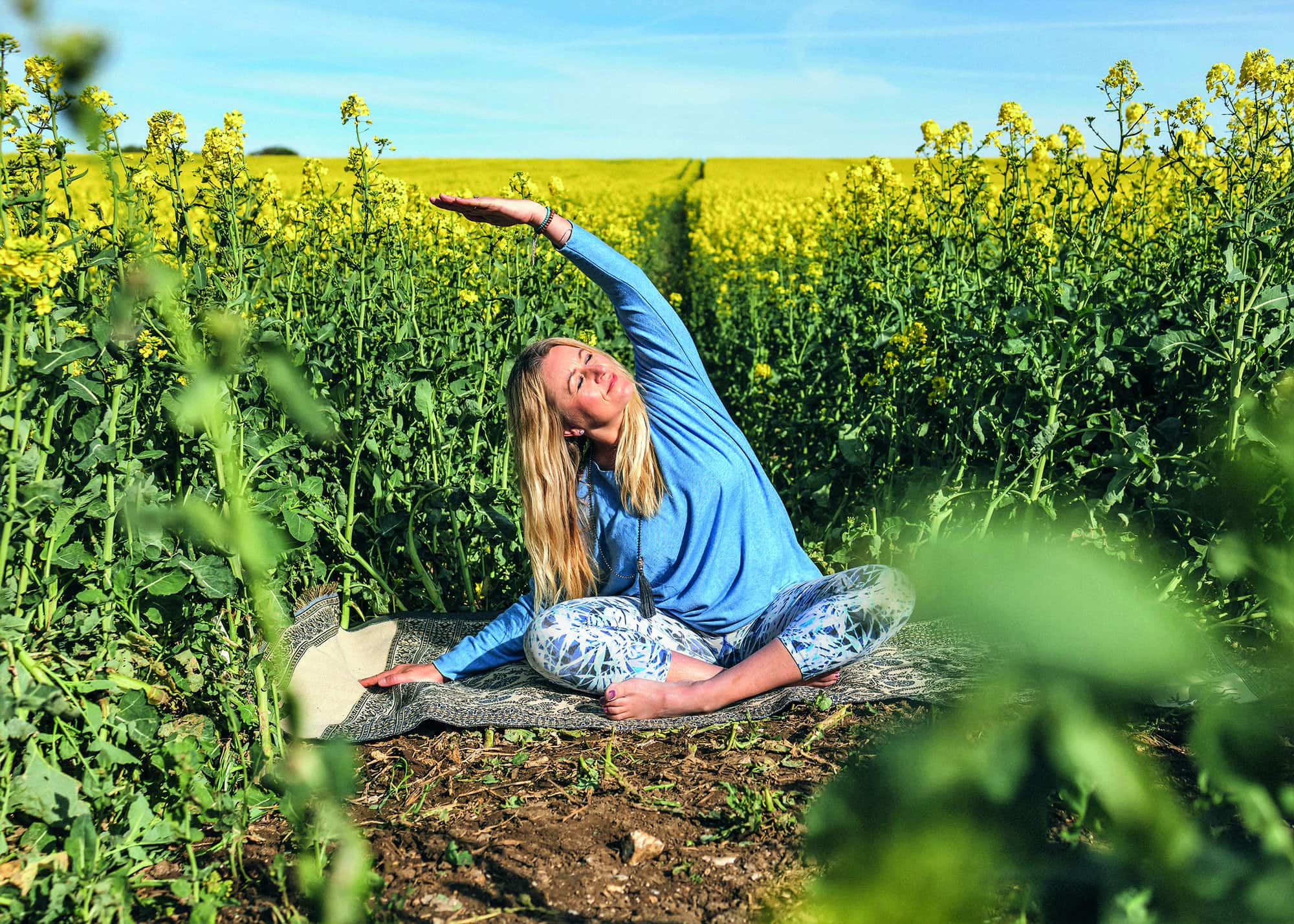
4. Side bend (Parsva Sukhasana)
Place your right hand on the floor beside you, or on a block. As you inhale lift your left arm up and with your exhale take your arm over your head, fingers pointing to the right. Stay here for several breaths (four is fine). Feel a beautiful opening across the left side of your body. Repeat on the other side.
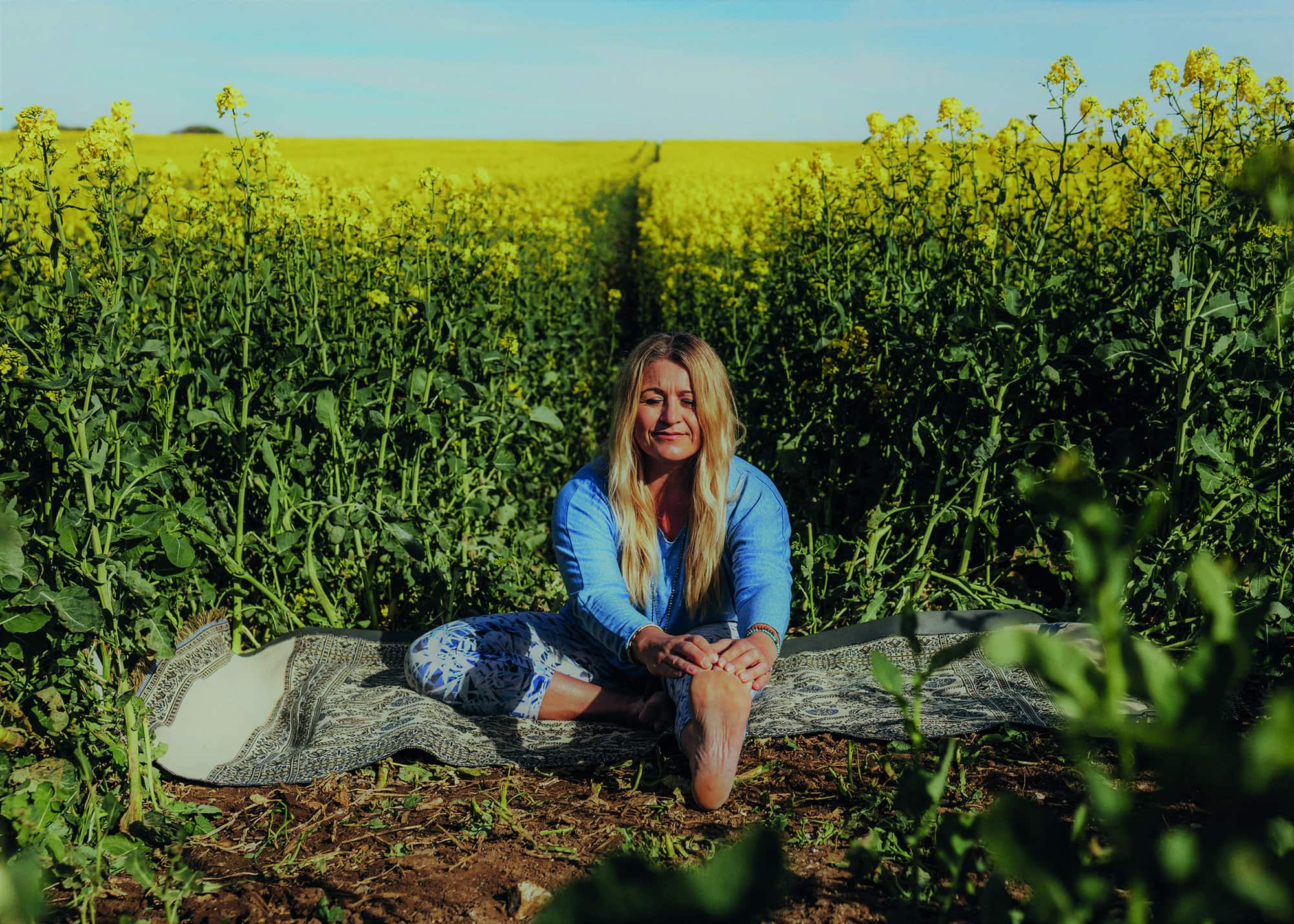
5. Head To Knee Pose (Janusirsasana)
Bend your right knee and place the sole of your right foot high on your left inner thigh. Inhale and lengthen your spine; exhale and bend at your hips and lean forward over your left leg. Take a couple of breaths here and then slowly lift your arms up and lengthen your spine on your inhalation. Release your arms and switch the sides.
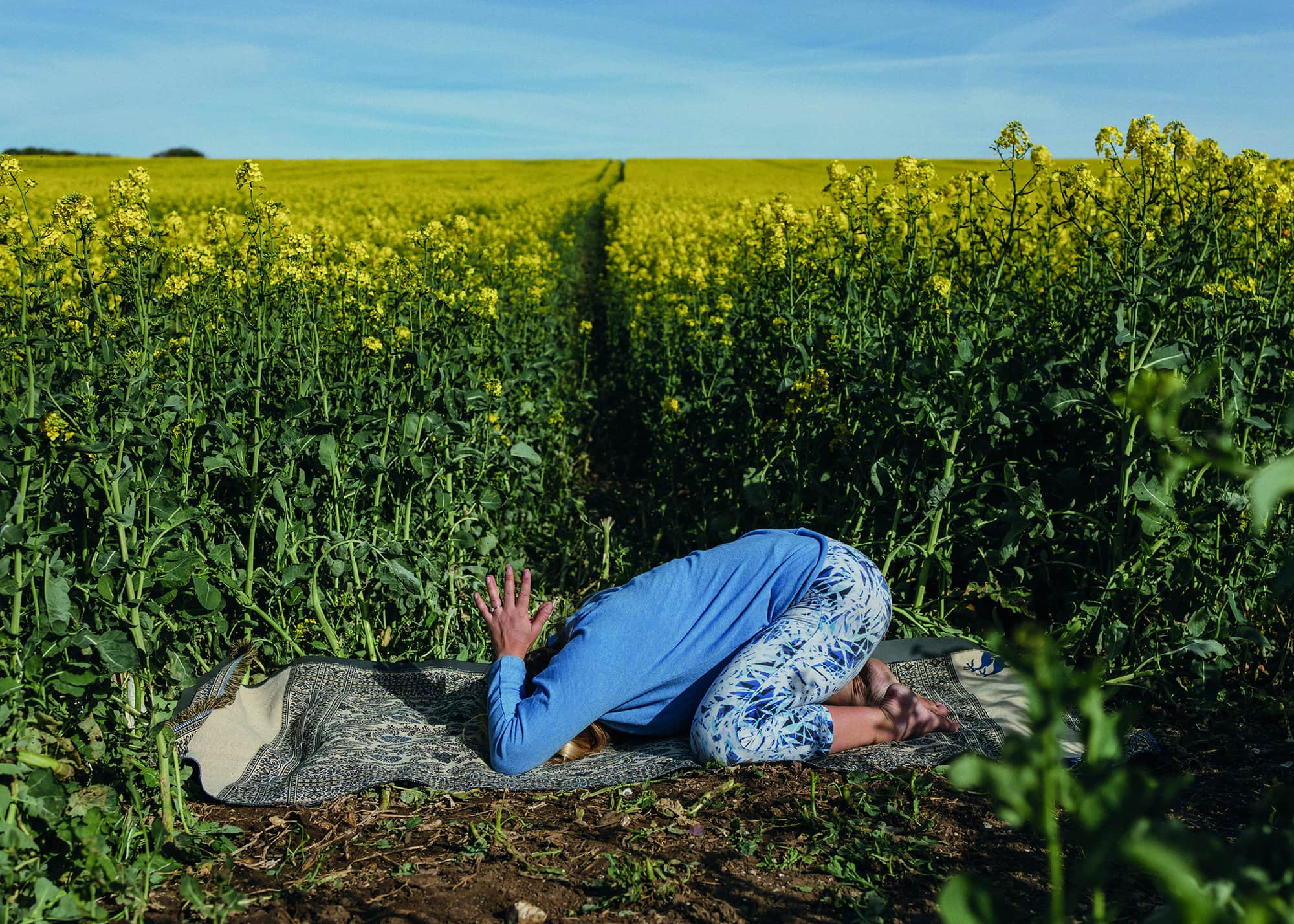
6. Child’s Pose (Balasana)
Make a transition onto all fours. Sit on your heels and let your upper body fold over your thighs with your head resting on the floor. Your arms are resting beside your legs. For extended child pose, separate your knees but keep your big toes together and stretch your arms in front of you. For more comfort you can place a blanket under your knees or bolster under your torso. Enjoy this beautiful resting pose. Slow down your breathing and relax. I enjoy this variation with hands in prayer.
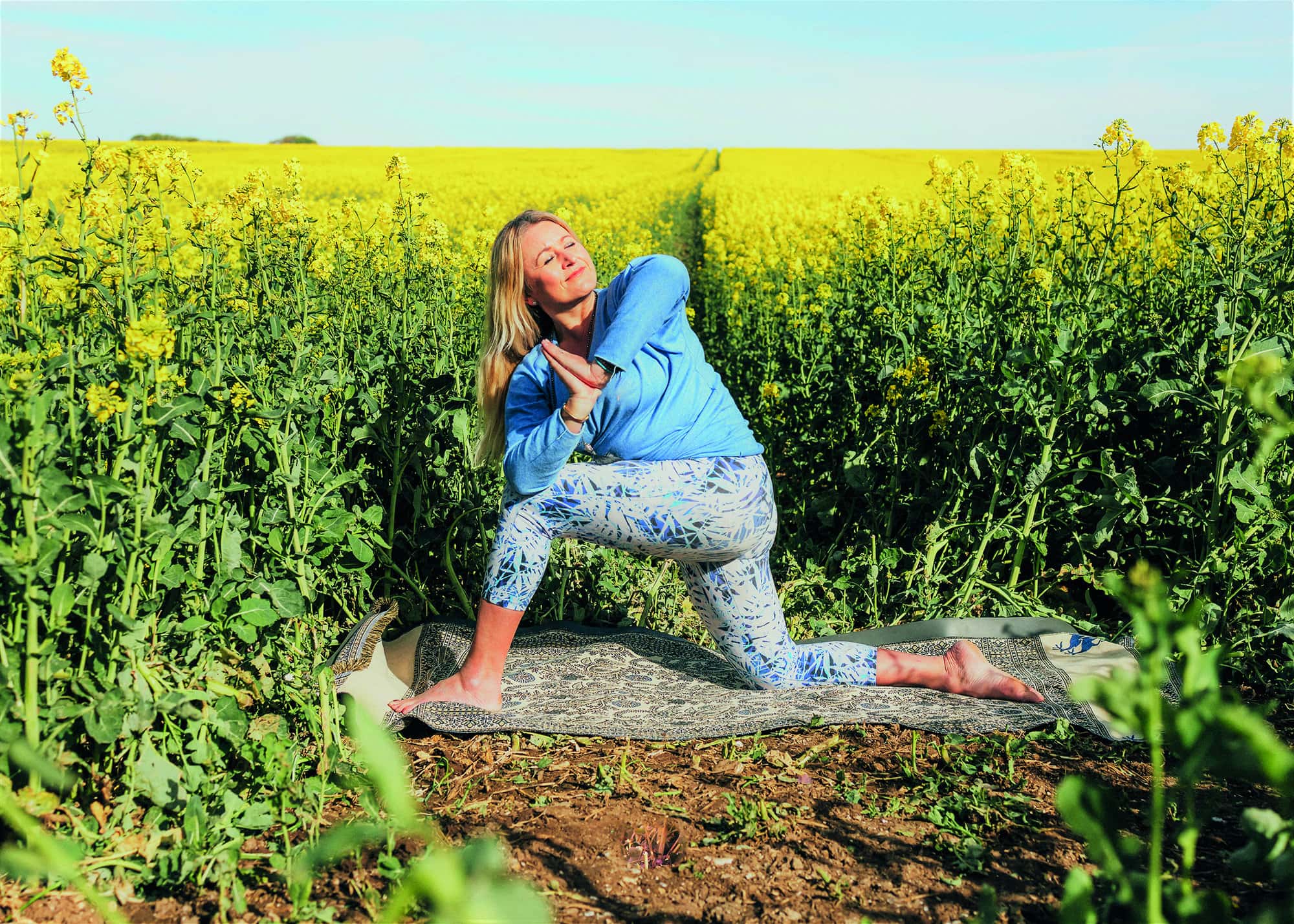
7. Low Lunge With Twist (Parivrtta Anjaneyasana)
From your child’s pose come back onto all fours and step your right foot forward – place the foot between your hands. Keep your left knee on the floor, feel free to put a blanket underneath.
Bring your hands to Anjali mudra (hands in prayer) and roll your shoulders slightly back so your chest feels beautifully open. Your right knee is above your ankle – adjust if not. Take a couple of breaths here and then slowly start to twist your torso to the right with your exhale. Keep your hands together as you place your left elbow on top of your right thigh and your right elbow will be pointing up towards the sky. Keep your chest lifted and open; try not to sink into this posture and don’t forget to breathe! You can rest in child’s pose before you go to the other side.
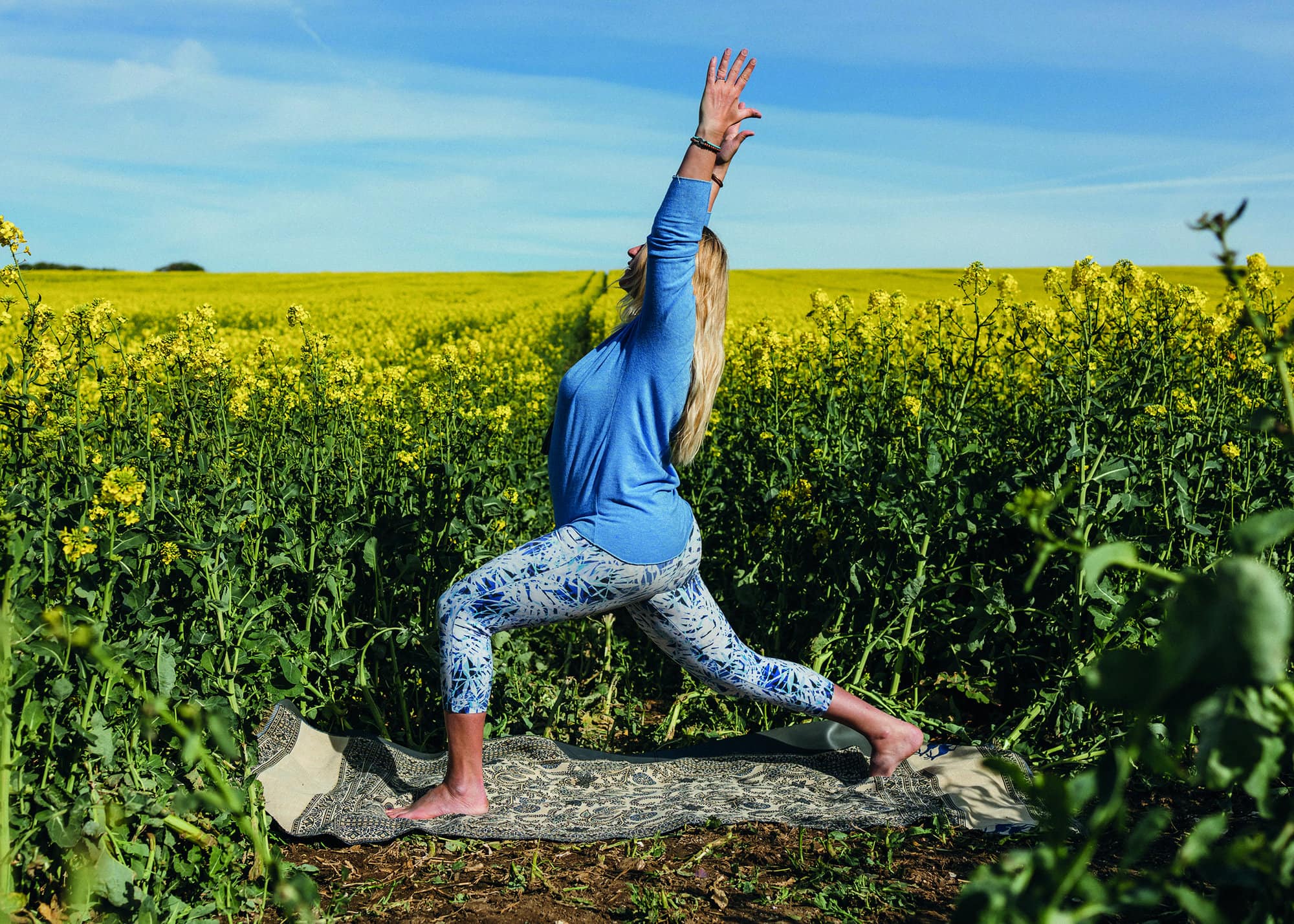
8. High Lunge (Utthita Ashwa Sanchalanasana)
We are slowly making our way up into standing. Keep your right foot at the front of the mat and take a long step back with your left foot. Both feet will be pointing forward towards the short edge of your mat. There is a space between your feet (hip distance) and the heel of your back foot is lifted off the floor. The front leg creates a right angle with the knee right above the ankle. Back leg is straight, knee presses up towards the ceiling and heel stretches towards the floor. Lift your arms up whilst you roll your shoulders back and down and open the chest. Don’t forget to breathe and keep your shoulders away from your ears. After several breaths, step your back foot forward and change sides.
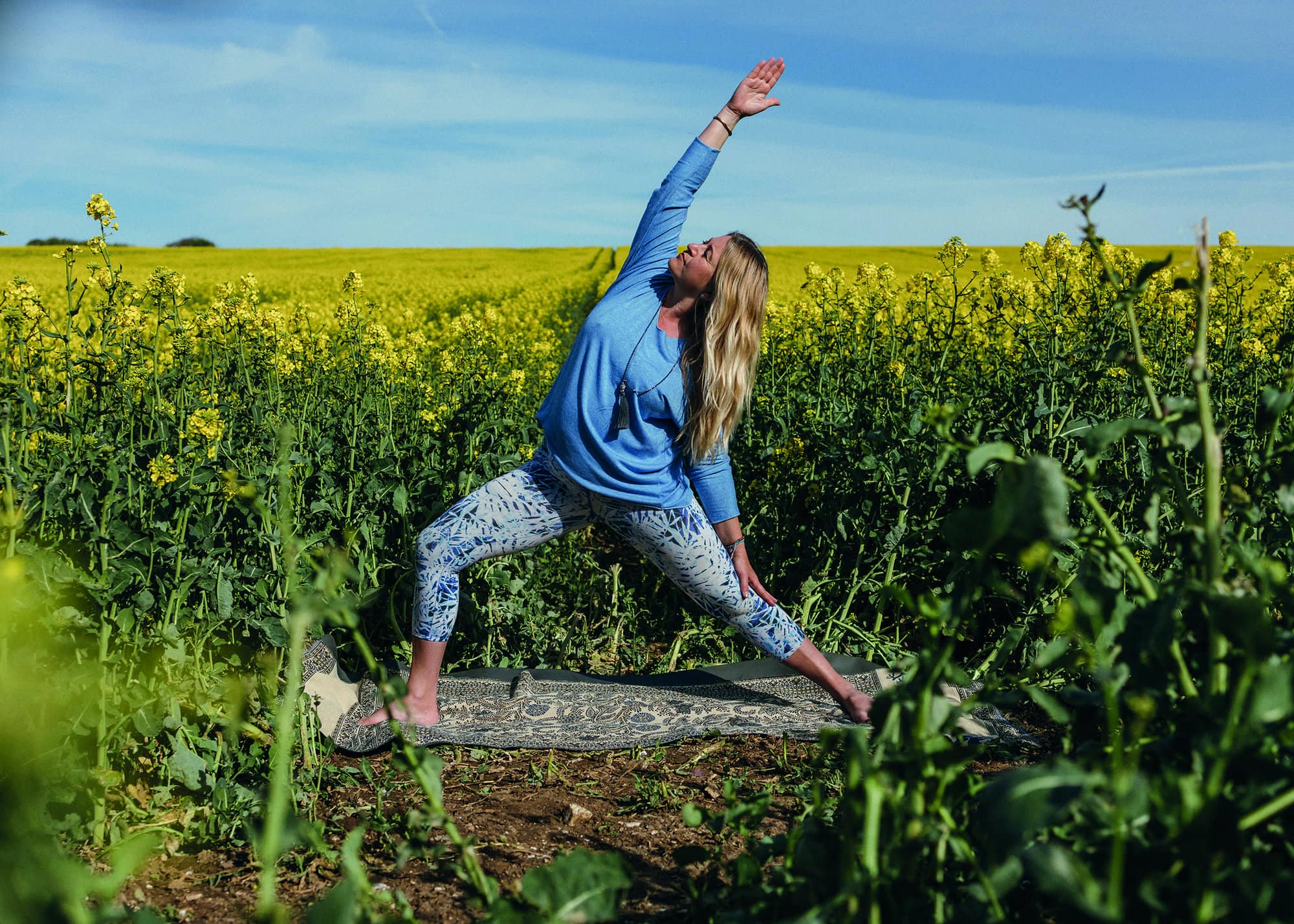
9. Reversed Warrior (Viparita Virabhadrasana)
From the high lunge with your right foot at the front of the mat, turn your left foot 90º to the left, so your toes are pointing to the long edge of your mat. With the right knee bent, guide your hips so they are parallel with the long edge of the mat and lift your arms to shoulder level. Inhale and lift your right arm up to the ceiling. At the same time, lower your left hand and slide it down the back of your left leg. Lift your chest and enter a gentle back bend. Look up to your raised hand and stay for a couple of breaths.
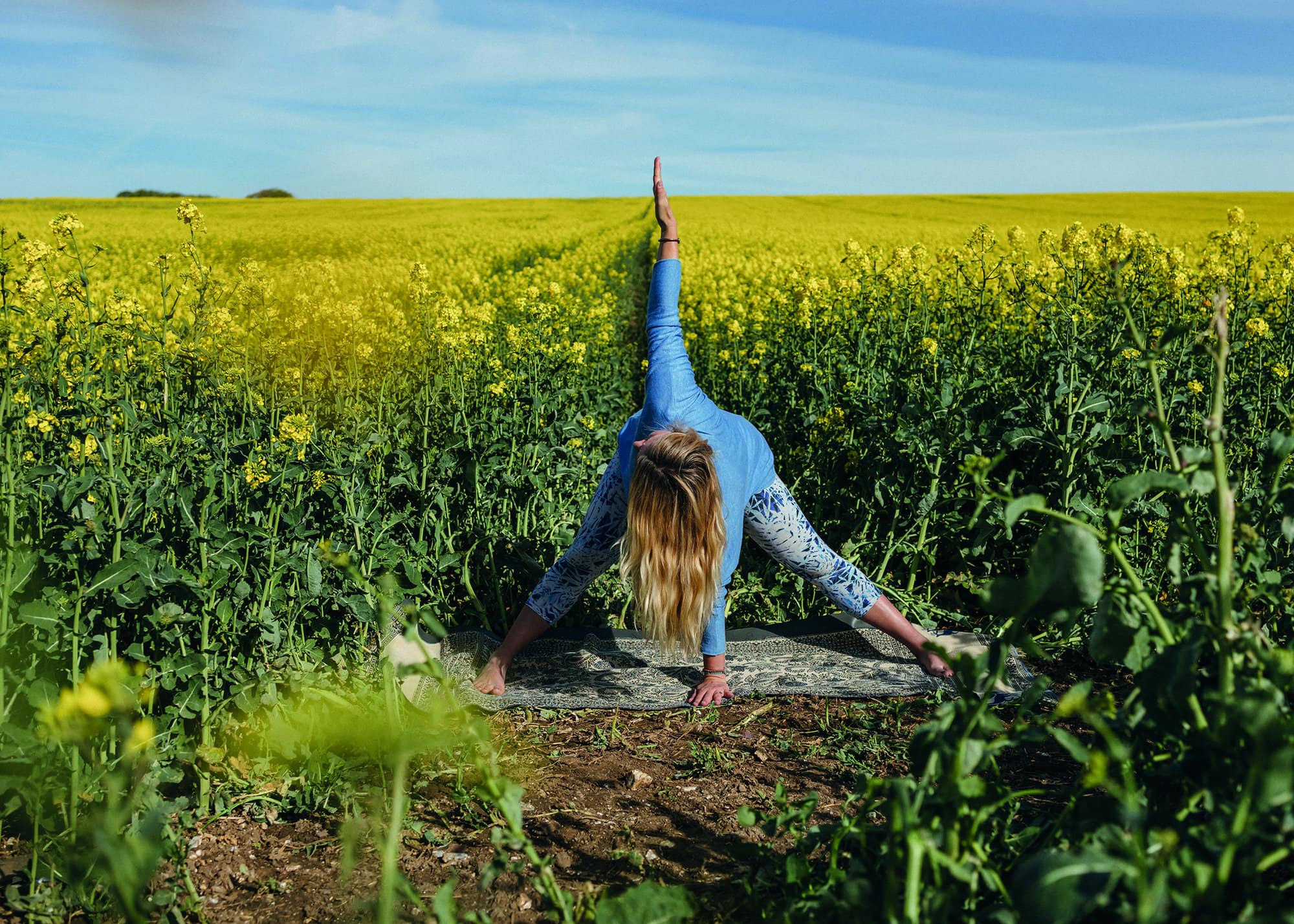
10. Wide-Legged Forward Fold With A Twist (Parivrtta Prasarita Padottanasana)
Shake your legs and then step your feet wide distance apart again. Place your hands on your hips and as you exhale start to make your way down into a wide legged forward fold. Place your hands on the floor or a block below you. Take a couple of breaths here, focusing on your exhales and letting go of anything that you wish to release. Try to place your right hand on your hip and maybe even stretch your right arm up to the sky. Don’t forget to breathe in this wonderful spinal twist that is so good for our internal organs, spine and releasing toxins from our system. Repeat on the left and, when ready, very slowly come back up into standing with your knees slightly bent.
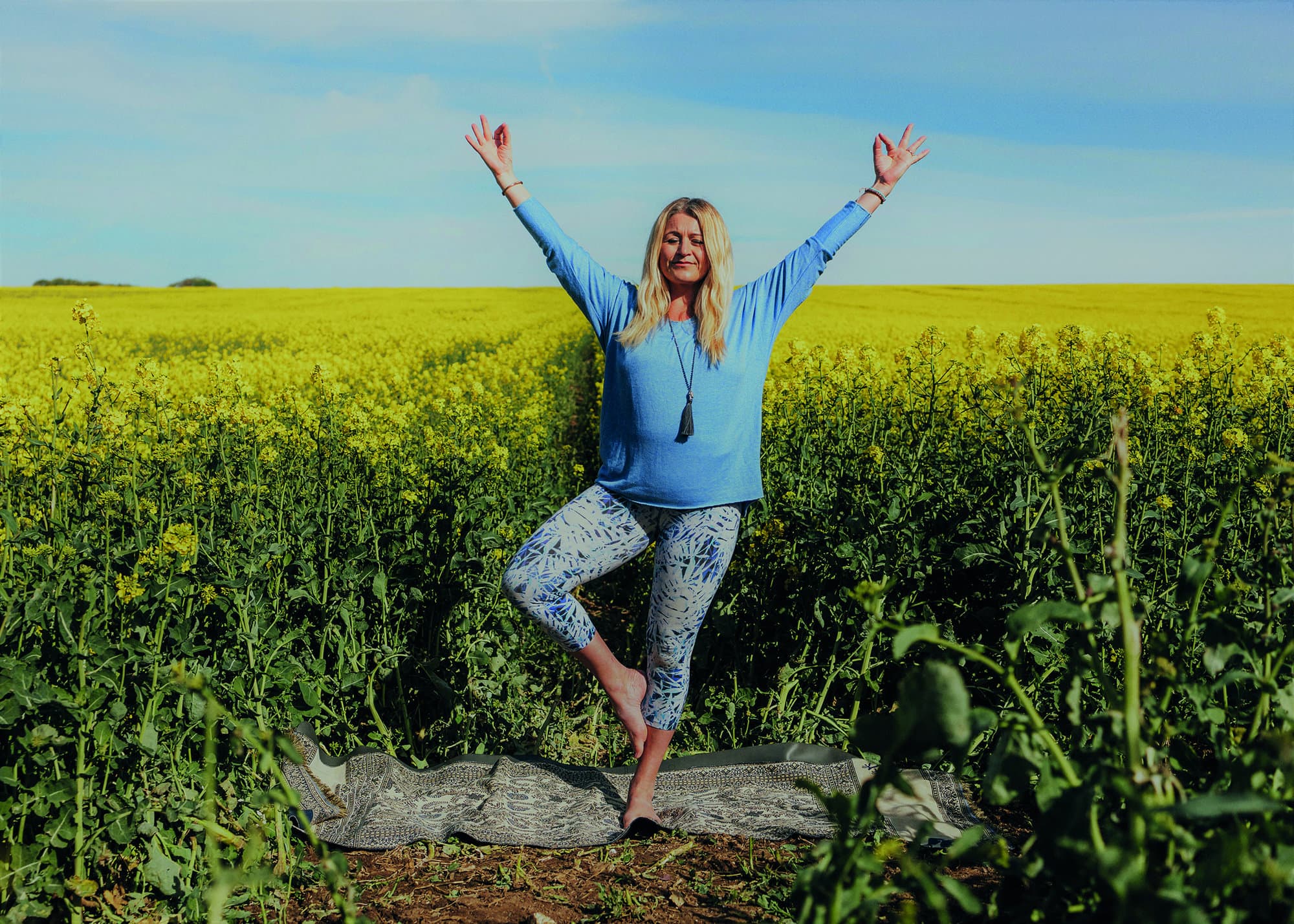
11. Tree Pose (Vrksasana)
Let’s check our balance in this wonderful balancing and hip-opening pose. Transfer your weight to the right side of your body and feel your left leg becoming lighter. Fix your gaze on a still point directly ahead of you – something on the wall or floor. Slowly lift your left foot off the ground and place the sole of that foot against your right calf. Make sure you avoid your knee. Bring your hands together in Anjali mudra (prayer). Breathe! If you can, take your arms up above your head. Repeat on the other side and notice that each side is slightly different. You might feel steady on your right and wobbly on the left and that’s absolutely fine!
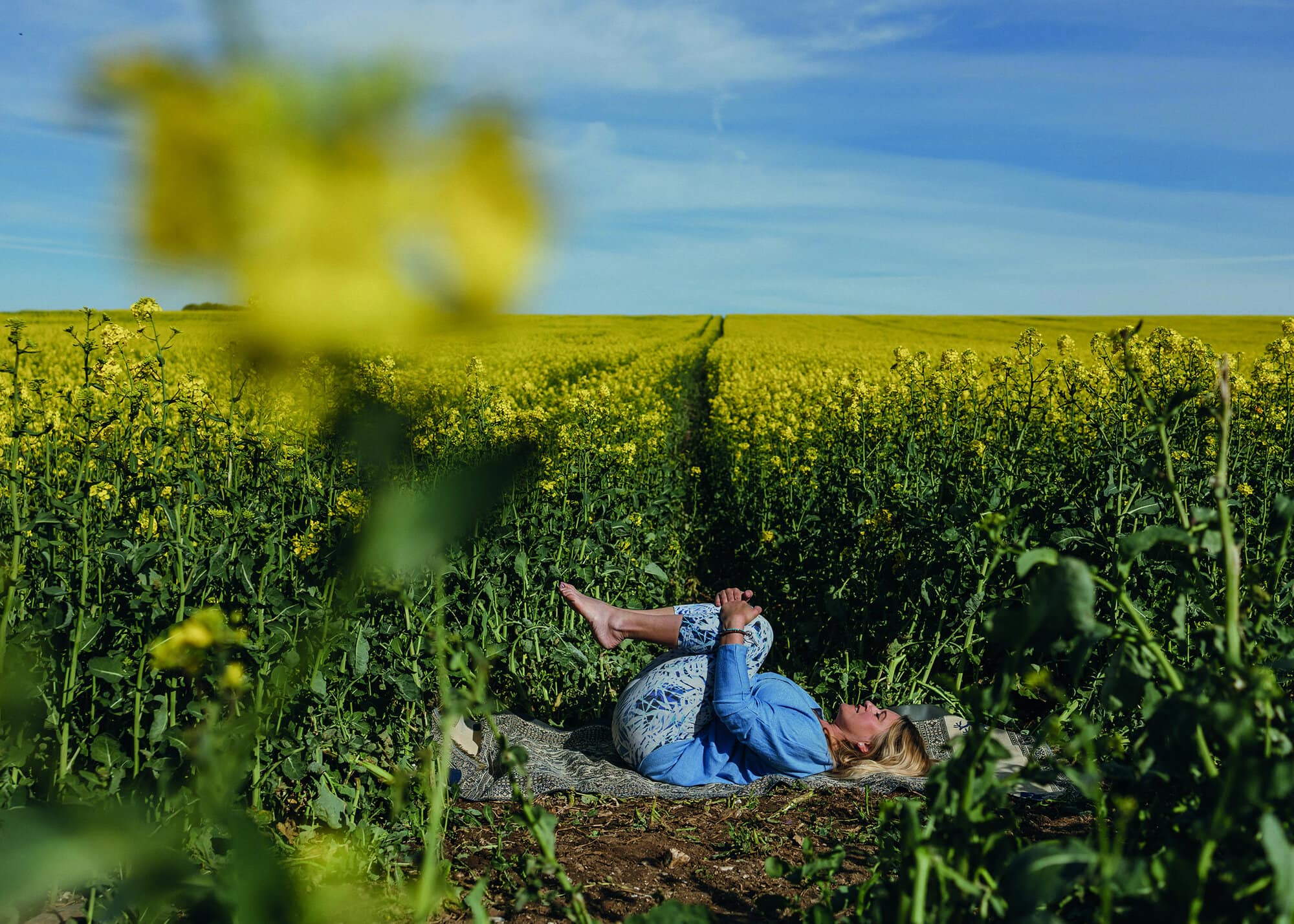
12. Knees To The Chest (Apanasana)
Bend your knees and bring them towards your chest. Here, you can gently rock and sway from side to side. This posture will massage your lower back and will give your internal organs a lovely massage too. After a couple of lovely rocks, let your body roll over to your right side.
Savasana & Relaxation
Now simply lay back and find your comfort in Savasana (corpse pose). All that matters now is for you to feel comfortable and relaxed, so use your props, cushion, blanket, eye pillow, maybe even a lovely lavender essential oil. Lay back and close your eyes, letting go of your practice, slowing down your breathing and your thoughts. This is your time to relax. You can give yourself a little body scan, relaxing all parts of your body from your toes all the way up to the crown of your head. Alternatively, you can simply follow your breath, listen to some gentle soothing music or enjoy a few minutes of silence.
Eva Kristlova is a BWY Yoga teacher based in East Sussex, who runs Yoga Life Studio in Eastbourne. Visit: yogaeastbourne.com and yogawitheva.co.uk


